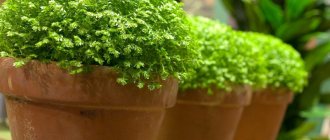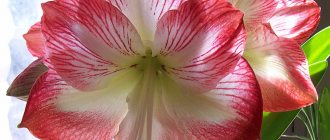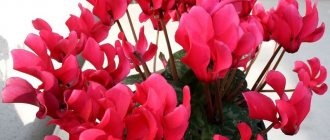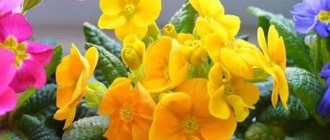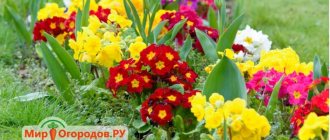Amaryllis is a large family of monocots, including about two thousand varieties. The main part of them are herbaceous types of flowers. They have an aesthetic appearance, for which they are very fond of flower growers in European countries. In addition to decorative purposes, some plant species are used in medicine and cooking.
In this article we will look at the amaryllis family, photos and the main features of its representatives.
Homeland of the family
Amaryllis is native to South Africa. In this part of the hottest continent, nature comes to life only for a couple of months a year. This period occurs in July and August. It is at this time that the arid southern part of Africa receives abundant rain. The soil is saturated with moisture, and the bulbs of the plant of the amaryllis family acquire buds.
It is remarkable that in such a short time the desert terrain of South Africa is being transformed. The landscape is covered with a colorful carpet of all kinds of flowers and grasses. Among this abundance of vegetation, large flowers stand out. On a massive thick stem, which can reach 60 centimeters in height, there are inflorescences formed from buds of various colors. A flower of the amaryllis family can have a different shape and shade depending on what species it belongs to. It can be white, burgundy, or pink.
Whiteflower
Distributed in the Carpathian Mountains, in deciduous forests, damp meadows and ravines; also grows along river banks and near reservoirs. Refers to ground-blooded plants. They are early spring perennial bulbous amaryllis plants, up to 30 cm in height.
The flowers are broadly bell-shaped, pure white, fragrant. Flower petals are decorated with green or yellow spots. Whiteflower blooms in April, later than Snowdrop. Propagated by seeds and bulbs. This is a frost-resistant, moisture-loving plant.
The soil for its cultivation must be loose, fertile, and sufficiently moist. They are planted in borders, in rock gardens, on lawns, and are also used for arranging bouquets.
general description
The Amaryllidaceae family includes about seventy genera of bulbous plants. It is interesting that, although the historical homeland of this culture is South Africa, this did not prevent it from spreading widely to all continents. Some members of the amaryllis family are found even in temperate climates. These include daffodils and snowdrops. However, most species of the amaryllis family grow in tropical and subtropical zones.
Most heat-loving species can be grown in apartment conditions. These include hippeastrum, clivia, vorsleya and rhodophiala. The main reason for the fame of the amaryllis family lies in their unusual inflorescences. They have a very aesthetic and beautiful appearance, thanks to which they can fit into any interior. Buds can be collected in several pieces. There are also plants with single flowers.
Amaryllis grows in the southern part of the African continent. An interesting fact is that gardeners often mistake it for another plant - hippeastrum. This crop is very similar in appearance to the amaryllis family, but grows on the American continent. This caused some confusion, and therefore the International Botanical Congress put forward certain recommendations in the mid-20th century.
- All amaryllis found in South Africa can be combined into one species - beautiful amaryllis.
- All subspecies growing on the American continent are classified as hippeastrum.
However, for many years, clivias and many other bulbous flowers were also called amaryllis. Therefore, to this day, often in descriptions of the characteristics of the amaryllis family one can see the name hippeastrum as a synonym for this type of plant.
Sternbergia
Homeland - Mediterranean, South-West Asia, Eastern Europe, Transcaucasia, Pamir-Altai, Crimea. Refers to low-growing ground-blooded, bulbous, perennial plants.
The leaves are belt-shaped, dark green, in rosettes. Their appearance is observed either at the beginning of flowering of the plant or simultaneously with the buds. The flowers are yellow, funnel-shaped. Single or two, having a short or elongated tube and located on a rather short peduncle.
Sternbergia blooms in September-October, some amaryllis species in early spring. Flowering is abundant and quite long. The plant does not bear fruit; it is propagated vegetatively by baby bulbs. This is a heat-loving, light-loving plant; in the southern regions it grows in shade and partial shade.
The soil for growing must be permeable, well-drained, and contain humus. Planted in parks under bushes and trees, in rock gardens and rocky gardens; used for forcing and as a potted crop, as well as for decorating bouquets.
The following types of Sternbergia are found: Sternbergia yellow - yellow flowers; Sternbergia Fischer - leaves are dull, linear; Sternbergia grandiflora - large, yellow flowers.
Appearance of leaves
Many people who see amaryllis for the first time may think that this plant lacks foliage. But it still exists. The leaves of members of the amaryllis family are long and grooved in shape. Their color varies from light green to deep dark. The bush has a peculiar structure. Leaves grow from the root, not from the petioles. This culture does not have them. One of its main features is the death of leaves during the dormant period. This can only be observed in hybrid types. If we consider other species, their foliage remains all year round.
Other names
Amaryllis is often confused with the similar hippeastrum, but this is incorrect . Currently, there are more than 200 varieties of hippeastrum, while amaryllis is represented by only two species - Amaryllis belladonna and Amaryllis sarniensis. If we talk about the Russian name, then flower growers call this houseplant amaryllis beautiful.
The main difference between these types of ornamental plants is the flowering period - amaryllis blooms in the fall, while hippeastrums enter the flowering period in winter and spring. A detailed comparison of amaryllis and hippeastrum, as well as descriptions of plants and their photos, can be found here.
What is a peduncle
Before the start of the most beautiful period, the arrow with buds is released. The size of the peduncle directly depends on the parameters of the bulb, in particular its age. Also important factors are the conditions under which amaryllis grows. If the bulb is sufficiently developed, the peduncle can reach a size of 55-60 centimeters. It has a dense, fleshy structure and is not hollow inside. During the growth period, the peduncle is always directed towards the light. In order for it to have the correct, even shape, the container with the plant is regularly rotated around its axis. The arrow is removed only after the seeds have completely ripened.
Some lovers of indoor plants immediately after the first bud opens, cut off the peduncle and place it in a container of water. It is noteworthy that the remaining flowers on it fully bloom and are capable of existing no less than on the plant. The shoot is cut off so that the bulb has the opportunity to produce a new one. However, using this method, it will not be possible to obtain amaryllis seeds.
Reproduction
The plant reproduces in 3 ways:
- Daughter bulbs. Flowering with this method can begin 3 years after separation.
- By dividing a large onion. To make the formation proceed faster between the lobules, it is recommended to insert knitting needles along the incisions.
- Seeds. Seedlings begin within a month, and flowering occurs only 7 years after propagation.
To propagate a flower, it is important to know which method to choose and how to plant seeds or bulbs correctly.
Video about methods of propagating amaryllis:
You will learn more about reproduction and cultivation from this article.
Seeds of the amaryllis family, general characteristics
After the flower petals fall, boxes are formed in their place, in which the seeds are located. They initially have a rich green color and are triangular in shape. They consist of 3 chambers, where the process of seed ripening occurs. This period lasts at least 1 month. Each chamber contains up to 18-20 seeds. Their color varies from white to pale red. For this, gardeners often compare them to pomegranate seeds. Amaryllis seeds become unusable very quickly, so it is recommended not to delay planting them after collection.
Snowdrop
Homeland - Europe, Western Asia, Mediterranean, Turkey, Crimea, Caucasus. This is a perennial small bulbous plant that belongs to the winter-early spring flowering ground-blooded plants.
The leaves are linear, green, appear simultaneously with buds and single flowers. The flowers are bell-shaped, white, drooping. The flowers are located on herbaceous, thin, straight peduncles, the length of which is 7-30 cm. In cloudy, cool weather, the flowers are closed and resemble a hanging, rather large drop of milk.
In the South, snowdrops bloom from January to early March, in the middle zone - in April. The beginning of the growing season in the middle zone is observed in March-April, in the South - at the end of December - early January and ends in the middle zone at the end of June - early July; in the South - at the end of May - beginning of June.
Snowdrops are propagated by seeds and daughter bulbs. These are winter-hardy plants; in the middle zone they grow well and develop in open sunny areas; in the South - in shade and partial shade. For cultivation, soil containing humus is required.
Planted in groups and masses in rock gardens and rock gardens, on lawns; used for forcing, also used for decorating bouquets. Amaryllis species suitable for cultivation are: Snowdrop folded (leaves are folded, bluish-green in color, fragrant flowers); Snowdrop Snowdrop (white flowers, with a yellow spot on the perianth lobes); Snowdrop broadleaf (leaves are shiny, wide, green, flowers with a faint aroma).
Flower
It is large in size and can reach 10 centimeters in diameter. The flowers form umbrella-shaped inflorescences. Each of them can have up to 10-12 buds. In the wild, growing in South Africa, amaryllis can often have a simple shape, with 6 petals forming a funnel. At the same time, breeders every year breed more and more new hybrid species of this plant, where you can see flowers of various sizes with a rich palette of colors.
How to plant and propagate
This plant with spreading leaves and a high peduncle has insufficient resistance. Therefore, experts recommend using large containers during replanting. An important point when choosing a pot for amaryllis is its special shape. The container should be narrowed at the top and widen at the bottom. This will provide the necessary stability to the pot. When planting, certain requirements must be observed.
First, the bulb should be planted in the center. In this case, the distance from it to the walls of the pot should be at least three centimeters. If several bulbs are placed in a container, then a gap of at least 10 centimeters should be left between them. The second important condition is the volume of the pot. It should be wide and deep. This is necessary since the plant has a powerful root system.
When planting, it is recommended to use soil containing river sand, garden soil and turf soil. You can create this mixture yourself or purchase it at a specialty store. Drainage plays a key role when planting. It is able to provide the necessary aeration of the roots. You can use gravel or expanded clay as drainage. It is poured in a layer of no more than three centimeters; you need to add a little sand on top.
The cheapest varieties
Among the budget varieties we can name the following varieties.
Akiko
White flowers with a barely noticeable pinkish tint, distinguished by their unique aroma.
Apple Blossom
This is a large-flowered plant with white and pink petals.
Avanti
Delicate large pink buds with white stripes .
Estella
Delicate pink flowers with white strokes, up to 20 cm in diameter.
Denver
This is an exquisite and delicate variety with snow-white buds, blooming for up to 9 months.
Amaryllis is an amazing plant that impresses not only with the beauty of its shades, but also with its subtle aroma . These are not all of its varieties, but they are the ones that are often used by flower growers. Amaryllis varieties are diverse, thanks to this you can create a real mini-greenhouse at home.
Care
With proper care, you can get up to three amaryllis blooms per year. This crop needs indirect light, moderate moisture, adequate soil drainage, comfortable room temperature and proper fertilization. Watering should begin no earlier than the boom rises to a height of ten centimeters. It is important to know that amaryllis do not like stagnant water. In this case, it is optimal to water no more than once every four days. It should be done so that water does not get on the bulbs. It should be poured exclusively into the soil.
In the winter months, you need to spray the crop, but not more than once every ten days. As fertilizers, flower growers recommend using mixtures saturated with phosphorus and potassium. If we are talking about amaryllis growing in open ground, then they can be fed with organic matter. The solution can be prepared from poultry droppings.
Difficulties of maintenance
The flower does not require complex care. But when growing it, pay attention to some nuances:
- Flowers may turn pale or black. In the first case, it is necessary to remove the pot with the plant from direct sunlight. The cause of darkening of the leaves can be a damp, cold room.
- Flowers droop and leaves become paler when there is a lack of moisture.
- Yellowed leaves are a sign of pest damage to amaryllis.
The plant may not bloom for the following reasons:
- The bulb was not at rest.
- There is not enough sunlight.
- The room is cold or damp.
- The soil is not fertile enough.
- Pests attack the bulb.
Sudden changes in the condition of the flower indicate its illness: it may be affected by fungus or insects.
To prevent the anticipation of a flower stalk from becoming fruitless, try to remove negative factors. Remember that amaryllis blooms in the 3rd year when grown from a bulb and in the 7-8th year when grown from a seed.
Read about why the plant does not bloom and how to save the plant in our material.
Check out more amaryllis content from our experts. Read about the differences between hippeastrum and amaryllis, as well as the features of bouquets using this flower.
Diseases and pests
The most dangerous and destructive disease for amaryllis is stagonosporosis. When a disease affects a crop, spots form on the bushes, which become increasingly larger over time. This leads to the death of foliage. As a result, the bulb will also certainly die. Without the required number of leaves, it gradually becomes smaller and weaker. In order to cure a plant, as a rule, a 0.2% solution of Fundazol is used. Trichodermin or Fitosporin are also perfect. The treatment process itself lasts for two years and consists of treating the bulb before planting it, spraying the foliage and soil.
The most dangerous pests of amaryllis are: scale insects, scale insects, root mites, nematodes, slugs, mealybugs, narcissus fly and others. Florists recommend paying close attention to temperature conditions. The greatest activity and reproduction of pests occurs at high temperatures. Therefore, it is important to periodically inspect the crop for unwanted insects. On the lower and upper sides of the leaves you can find a scale insect protected by a waxy shell. But the greatest damage to the plant is caused by vagrants that spread through the foliage and suck the juice from it.
